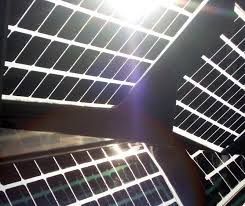The pricing regulator in the Australian state of New South Wales has slashed the recommended (but voluntary) level of feed-in tariffs for rooftop solar, while at the same time rubber stamping an increase in gas prices in the state of up to 20 per cent.
IPART (the Independent Pricing and Regulatory Tribunal) announced on Wednesday that its draft determination for solar feed in tariffs for 2014/15 recommended a retailer contribution of just 5.3c/kWh for solar energy exported back into the grid.
This is down from 6.6c/kWh in the current year – a fall that IPART says reflects the likely removal of the carbon price – while its “benchmark range” is cut to 5.0c/kWh to 9.6c/kWh at peak times.
This compares to recommended retail tariffs of around 28c/kWh and peak tariffs of more than 52c/kWh. The FiT is entirely voluntary, meaning that retailers do not have to pay anything for exports back into the grid. Some utilities insist that commercial scale installations have a mechanism that prevents exports back into the grid.
The determination by IPART represents the lowest FiT recommended by pricing regulators in Australia, and contrasts dramatically with regulatory rulings in the US, where in the state of Minnesota, for instance, the solar tariff is nearly as high as the retail tariff.
As we discussed in our story “Are Australian solar households getting ripped off?“, in Australia the state pricing regulators are only concerned with the impact on retailers and the so-called “avoidable” costs of delivery – the cost of wholesale generation, transmission losses, and some minor ancillary services.
But the regulators in Minnesota – and other US states – take into account not just the avoided fuel cost, but various transmission and distribution capacity costs, avoided generation capacity costs and, most tellingly, the avoided environmental cost.
The position of state-based regulators on feed-in tariffs has caused the solar industry to consider establishing “peer-to-peer” pricing mechanisms, and to call for changes to the way electricity tariffs are structured.
The decision came on the same day that IPART granted price rises of nearly 20 per cent for gas supplies in the state – a decision that will inflate household gas bills by up to $225 a year.
The rise was blamed on the anticipated price surge caused by the start of exports from the giant LNG terminals in Queensland, which is pushing domestic gas prices to parity with the international market.
This is expected to result in a doubling or trebling in wholesale gas prices in Australia. This is likely to flow through to electricity bills in NSW, as it has already done in Queensland, where the gas component was the biggest single cause of rising electricity bills for the coming year.
The rising price of gas is also forcing gas-fired generators out of the market because they can no longer compete with coal. Many gas fired generators are being written down in value, and are being re-assigned to act as peak load generators rather than base load or intermediate peakers.








